A 20:1 synergetic mixture of cafedrine/theodrenaline accelerates particle transport velocity in murine tracheal epithelium via IP3 receptor-associated calcium release
- PMID: 37654612
- PMCID: PMC10466409
- DOI: 10.3389/fphar.2023.1155930
A 20:1 synergetic mixture of cafedrine/theodrenaline accelerates particle transport velocity in murine tracheal epithelium via IP3 receptor-associated calcium release
Abstract
Background: Mucociliary clearance is a pivotal physiological mechanism that protects the lung by ridding the lower airways of pollution and colonization by pathogens, thereby preventing infections. The fixed 20:1 combination of cafedrine and theodrenaline has been used to treat perioperative hypotension or hypotensive states due to emergency situations since the 1960s. Because mucociliary clearance is impaired during mechanical ventilation and critical illness, the present study aimed to evaluate the influence of cafedrine/theodrenaline on mucociliary clearance. Material and Methods: The particle transport velocity (PTV) of murine trachea preparations was measured as a surrogate for mucociliary clearance under the influence of cafedrine/theodrenaline, cafedrine alone, and theodrenaline alone. Inhibitory substances were applied to elucidate relevant signal transduction cascades. Results: All three applications of the combination of cafedrine/theodrenaline, cafedrine alone, or theodrenaline alone induced a sharp increase in PTV in a concentration-dependent manner with median effective concentrations of 0.46 µM (consisting of 9.6 µM cafedrine and 0.46 µM theodrenaline), 408 and 4 μM, respectively. The signal transduction cascades were similar for the effects of both cafedrine and theodrenaline at the murine respiratory epithelium. While PTV remained at its baseline value after non-selective inhibition of β-adrenergic receptors and selective inhibition of β1 receptors, cafedrine/theodrenaline, cafedrine alone, or theodrenaline alone increased PTV despite the inhibition of the protein kinase A. However, IP3 receptor activation was found to be the pivotal mechanism leading to the increase in murine PTV, which was abolished when IP3 receptors were inhibited. Depleting intracellular calcium stores with caffeine confirmed calcium as another crucial messenger altering the PTV after the application of cafedrine/theodrenaline. Discussion: Cafedrine/theodrenaline, cafedrine alone, and theodrenaline alone exert their effects via IP3 receptor-associated calcium release that is ultimately triggered by β1-adrenergic receptor stimulation. Synergistic effects at the β1-adrenergic receptor are highly relevant to alter the PTV of the respiratory epithelium at clinically relevant concentrations. Further investigations are needed to assess the value of cafedrine/theodrenaline-mediated alterations in mucociliary function in clinical practice.
Keywords: Akrinor; ciliary activity; ciliary beat frequency; mucociliary clearance; perioperative.
Copyright © 2023 Schmidt, Rienas, Müller, Edinger, Sander, Koch and Henrich.
Conflict of interest statement
The authors declare that the research was conducted in the absence of any commercial or financial relationships that could be construed as a potential conflict of interest. The reviewer MD declared a shared affiliation with the authors to the handling editor at the time of review
Figures


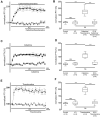
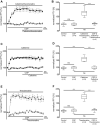
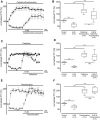
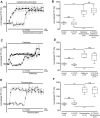
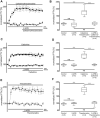


Similar articles
-
Dobutamine, Epinephrine, and Milrinone Accelerate Particle Transport Velocity in Murine Tracheal Epithelium via Ca2+ Release from Caffeine-Sensitive Internal Stores.Cells. 2025 Feb 5;14(3):228. doi: 10.3390/cells14030228. Cells. 2025. PMID: 39937019 Free PMC article.
-
Dopamine, norepinephrine, and vasopressin accelerate particle transport velocity in murine tracheal epithelium via substance-specific receptor pathways: dependency on intra- and extracellular Ca2+ sources.Front Pharmacol. 2024 Sep 6;15:1401983. doi: 10.3389/fphar.2024.1401983. eCollection 2024. Front Pharmacol. 2024. PMID: 39309009 Free PMC article.
-
A fixed 20:1 combination of cafedrine/theodrenaline increases cytosolic Ca2+ concentration in human tracheal epithelial cells via ryanodine receptor-mediated Ca2+ release.Sci Rep. 2023 Sep 27;13(1):16216. doi: 10.1038/s41598-023-43342-0. Sci Rep. 2023. PMID: 37758747 Free PMC article.
-
Cafedrine/Theodrenaline (20:1) Is an Established Alternative for the Management of Arterial Hypotension in Germany-a Review Based on a Systematic Literature Search.Front Pharmacol. 2017 Feb 21;8:68. doi: 10.3389/fphar.2017.00068. eCollection 2017. Front Pharmacol. 2017. PMID: 28270765 Free PMC article. Review.
-
Mucociliary clearance--a critical upper airway host defense mechanism and methods of assessment.Curr Opin Allergy Clin Immunol. 2007 Feb;7(1):5-10. doi: 10.1097/ACI.0b013e3280114eef. Curr Opin Allergy Clin Immunol. 2007. PMID: 17218804 Review.
Cited by
-
Dobutamine, Epinephrine, and Milrinone Accelerate Particle Transport Velocity in Murine Tracheal Epithelium via Ca2+ Release from Caffeine-Sensitive Internal Stores.Cells. 2025 Feb 5;14(3):228. doi: 10.3390/cells14030228. Cells. 2025. PMID: 39937019 Free PMC article.
-
Dopamine, norepinephrine, and vasopressin accelerate particle transport velocity in murine tracheal epithelium via substance-specific receptor pathways: dependency on intra- and extracellular Ca2+ sources.Front Pharmacol. 2024 Sep 6;15:1401983. doi: 10.3389/fphar.2024.1401983. eCollection 2024. Front Pharmacol. 2024. PMID: 39309009 Free PMC article.
References
-
- Barrera N. P., Morales B., Villalón M. (2004). Plasma and intracellular membrane inositol 1,4,5-trisphosphate receptors mediate the Ca2+ increase associated with the ATP-induced increase in ciliary beat frequency. Am. J. Physiology - Cell. Physiology 287 (4 56-4), 1114–1124. 10.1152/ajpcell.00343.2003 - DOI - PubMed
-
- Bassi G. L., Zanella A., Cressoni M., Stylianou M., Kolobow T. (2008). Following tracheal intubation, mucus flow is reversed in the semirecumbent position: possible role in the pathogenesis of ventilator-associated pneumonia. Crit. Care Med. 36 (2), 518–525. 10.1097/01.CCM.0000299741.32078.E9 - DOI - PubMed
LinkOut - more resources
Full Text Sources

